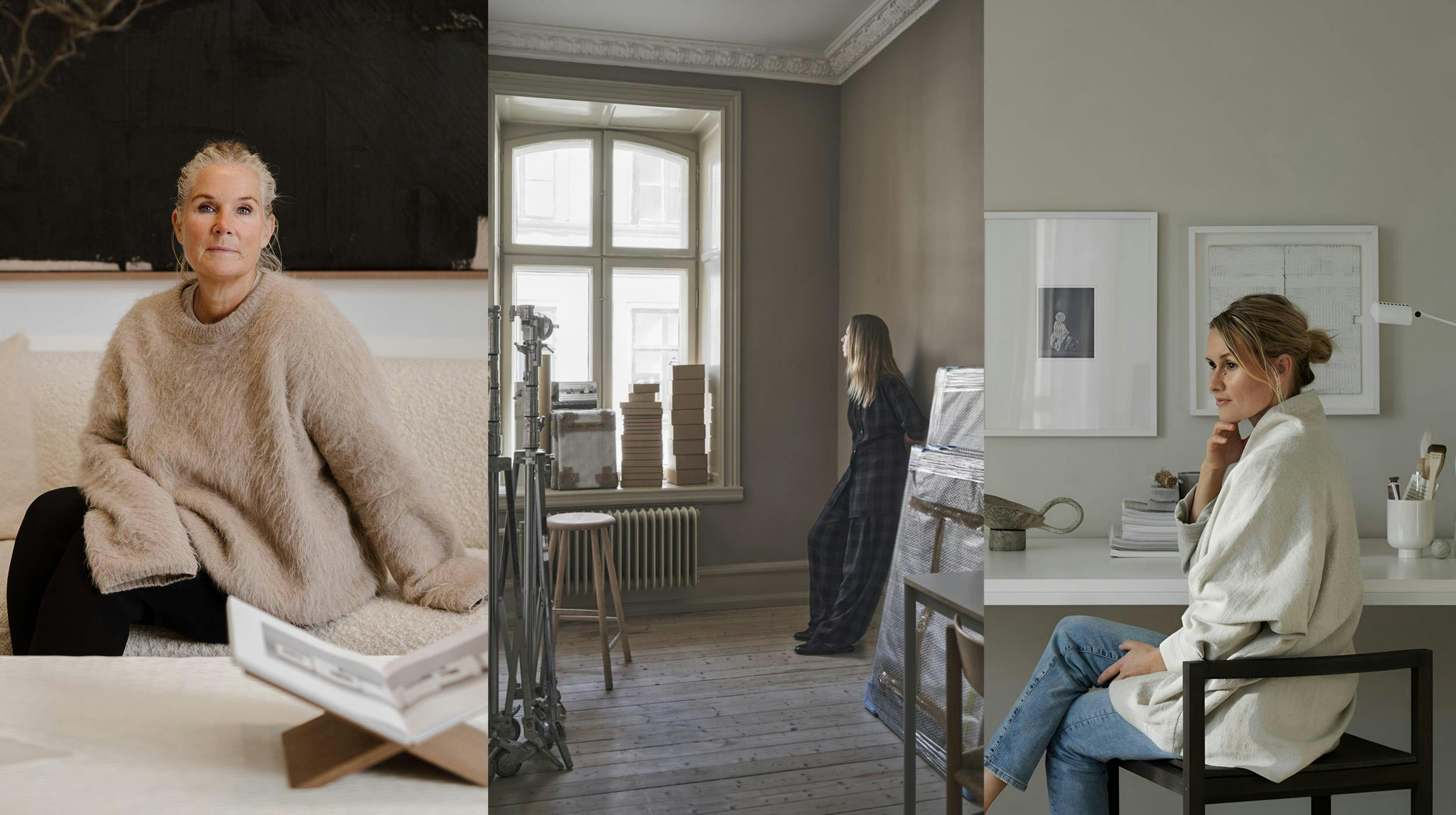
WHY SCANDINAVIAN DESIGN FASCINATES THE WORLD
Scandinavian design is characterized by a minimal, clean approach that seeks to combine functionality with beauty. Its focus is on simple lines and light spaces, devoid of clutter. Typically, there is nothing superfluous about Scandinavian design; it strips back the unnecessary, showcasing the essential elements of any product. Scandinavian design fascinates and has been the subject of debates, exhibitions, and marketing agendas for many years. Why? A guiding principle of Scandinavian design is to establish harmony with one’s environment and to create things made to last. It seeks to compliment the art of living well by promoting a simple home environment that is filled with quality items and enhances an unencumbered lifestyle devoid of excess consumerism. In this way it’s both important for an individual, as a home environment that encourages a life well lived is an increasingly important counter to the pressures of modern life, and for the planet, as it challenges rampant consumerism and deepens our connection to nature.
We've invited 3 female creatives – Lotta Agaton, Petra Bindel and Pella Hedeby. These 3 shining epitomes of Scandinavian Design all have deep Scandinavian roots and built their career on Scandinavian aesthetic through photography, architecture and interior design. We let them give us their perspective on this fascinating design movement we all love so much.
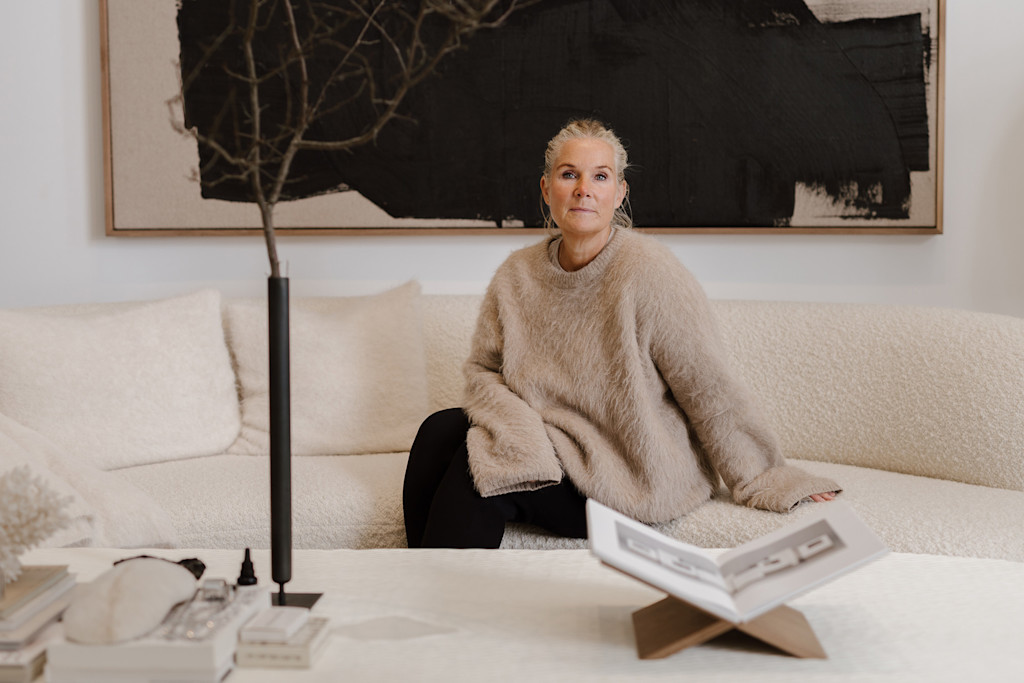
Who is Lotta Agaton and how did your illustrious career begin?
My career had its roots in assisting my architect father. In the early 90´s, I ventured into the vibrant world of Designers Guild, a time when bold colors were in vouge. The turning point came around 2000 when I embarked my journey with Residence Magazine, marking my debut as an interior stylist. I styled every feature in the magazine, honing a swiftness and efficiency that continued to serve me well to this day. Transitioning to freelance work, I embraced the motto “better to say yes than no” My path led to start a blog and eventually my own interior store. I even conducted courses at Beckmans Design School, all driven by a desire to avoid dwelling on the “what ifs”. My career has been marked by a lack of rigid strategy, my guiding principle has been to embrace opportunities rather than decline them. This approach has led to an organic evolution, where I willingly step out of my comfort zone in pursuit of growth and innovation.
How would you describe Lotta Agaton Interior Studios signature values and style?
Lotta Agaton Interior Studio is built upon Scandinavian design, a foundation of importance. This foundation embodies durability over time, materials like wood and stone that resonate with our heritage. Yet, within this framework, a captivating dynamic emerges through contrasts, particularly in the form of objects. While being fundamentally minimalistic, my style embraces a maximalist approach when it comes to ornamentation. A deep commitment to environmental consciousness and quality underpins my work, likely born from an era of disposability and poor material choices during the 80s. Guided by a motto that advocates for items to outlive me, to invest in pieces that possesses a life beyond my own. This philosophy not only shapes my creations but also reflects a dedication to sustainability and timeless aesthetics.
What is Scandinavian design/style to you?
To me, Scandinavian design encapsulates the essence of nature through the incorporation of natural materials, all while fostering a sustainable mindset. The Scandi style is often synonymous with light – an almost obsessive appreciation for it, considering our Scandinavian mindset. However, I view Scandinavian style as more than just a minimalistic trend. It serves as a foundation that has the flexibility to involve in diverse directions. This could involve integrating elements from a more international aesthetic, introducing bold colors, and exploring a broader spectrum of design possibilities. I firmly believe that Scandinavian design is deeply rooted in history and heritage. It´s a connection to the past, drawing from traditions of working with materials, refining crafts, embracing the environment and celebrating light. This design style is a dynamic tapestry woven from these multifaceted influences, making a truly versatile and enduring phenomenon.
Why do you think Scandinavian design is showing relevance and appeal, as opposed to a passing trend?
The Scandinavian style possesses a unique adaptability that enables it to incorporate parallel trends. This versatility means that elements like mixed and vibrant art and textiles can seamlessly find their place within the Scandi aesthetic. This open-minded approach allows diverse influences and variations while still maintaining the core values of Scandinavian design, the style remains fresh dynamic and capable of evolving with the times while retaining its essential essence.
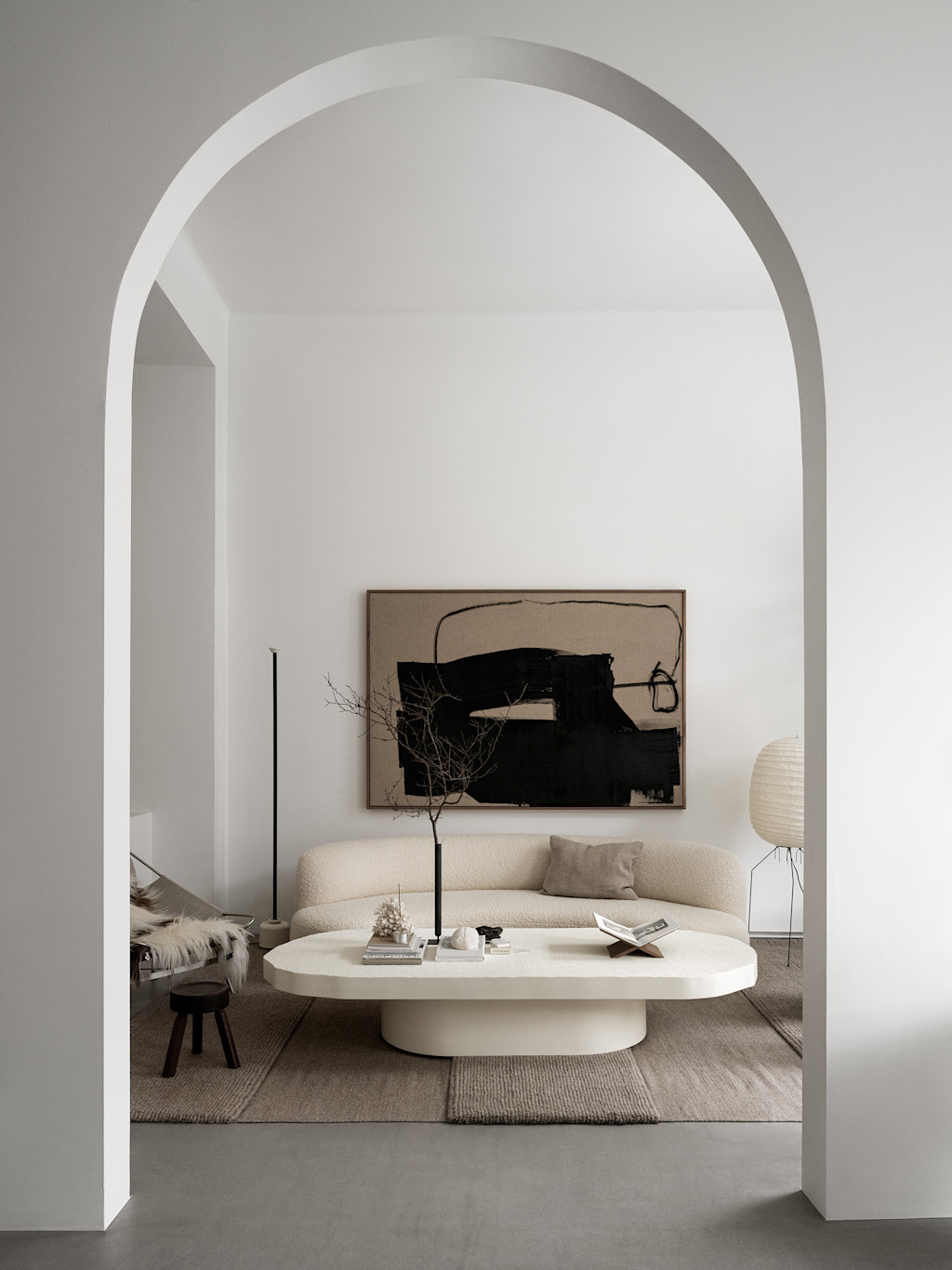
How do you think design affects our way of being - our sense of self, space and place?
Design serves to bring joy and happiness, tailored to our individual taste and plays an important role in fulfilling our fundamental need for a secure haven. Life´s demand underscore the significance of having a place to return to, where we feel safe and at ease, as an inviting space where family and friends can gather. This holds particularly true to Scandinavians, who contend with darkness and coldness that often beckon us indoors. This context prompts an effort to curate our living spaces, transforming them into sanctuaries that reflect our values and offer a respite from the external environment. In essence, the relationship between design and our well-being is profund.
What are the key essentials to create the perfect setting?
Creating the perfect setting begins with establishing a strong foundation. This foundational aspect is vital and provides the groundwork upon which everything else is built. From this starting point, the setting evolves and expands, gradually taking shape into a cohesive and captivating whole. Weather it´s a complete environment or a singular focal point, the process involves layering and careful addition, each new element contributes to the overall composition. Renovation work can understandable be a test of patience. The process of transforming a space can be a challenging one, requiring time and tolerance. It's natural to feel a sense of urgency to see the end result, yet recognizing the importance of renovation in the grand scheme is crucial. Finding that balance between eagerness and patience is part of that journey.
Lastly, what are you working on now?
The upcoming fall is incredibly busy and exciting. It's a variety of projects we're involved in. From a hotel project on Mallorca to a comprehensive private client project encompassing everything from the technical aspects to design details like cutlery. Simultaneously, we're working with returning clients on furniture collections, catalogue creation and showrooms by setting the tone for the upcoming year. We're involved with crafting furniture collections for various companies, along with my own LA Objects project. With around 30 ongoing projects, the diversity we´re encountering is both invigorating and challenging. I have a desire to step out of the comfort zone and embrace innovation while still striving to maintain my signature style and creative spirit.
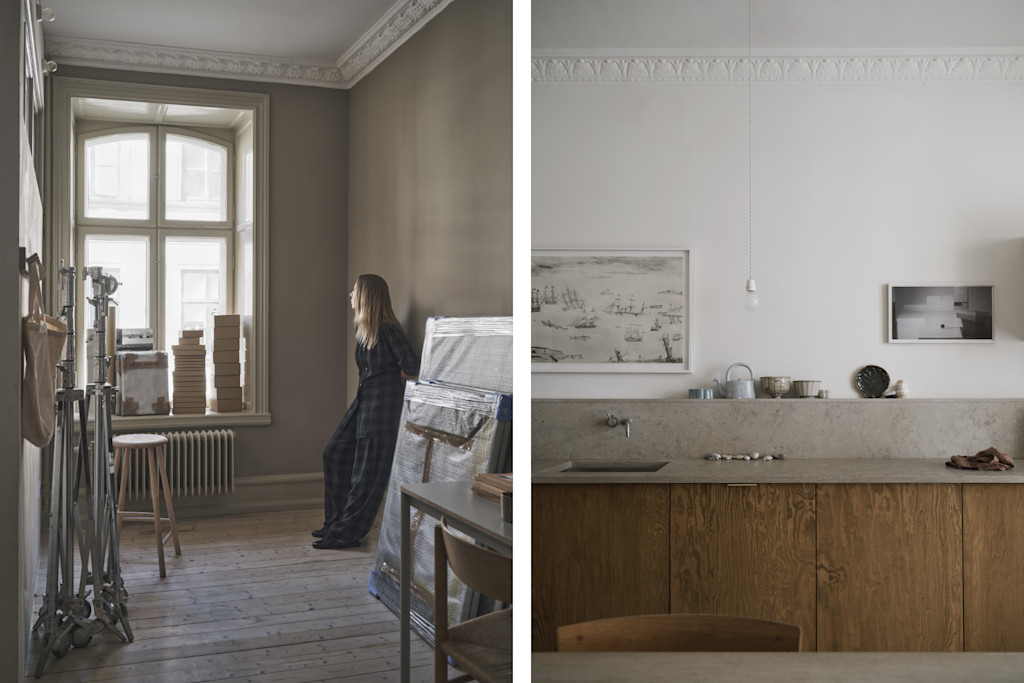
Who is Petra Bindel?
A photographer and professional nomad, born 1975 in Sweden, who is constantly learning.
What is design and architecture to you?
It is what I surround myself with. The objects, the spaces that gives me a comfortable life. They both provide inspiration and make my life richer.
What defines Scandinavian design/style in your line of work?
As a photographer I would emphasize the specific relationship to light we have in the north. For many months of the year, we are deprived of natural light and this has shaped our culture. My fascination with light and how it subtly shifts throughout the year was the reason why I picked up a camera as a 14-year-old. I was searching for ways to catch it. We are known for clean, minimal design. Working with calm, sparse compositions reflect our surroundings, vast landscapes and our close relationship to nature. But now we get so much more input and inspiration from other places. It’s great to see more diverse and personal interior photography and design. This is redefining what Scandinavian is in many ways but is maintaining the essence and the very high quality of work.
What is your take on why Scandinavian style has captivated not just the Nordic markets, but the entire world?
The Scandinavian countries form a very small but privileged corner of the world. In our visual language we portray design and architecture in a utopian way. Many people idealise and search look for organised perfection, though there is none in real life. It’s the perfectly organised visual illusion - a relief in a chaotic, messy world.
How do you think design and architecture affects our way of being - our sense of self, space and place?
It can give empowerment, joy and help us change the way we live, feel and think, if used skillfully.
What are the key essentials to create a perfect picture?
I never search for perfection. I want the image to feel complete. It is most often an intuitive sensation in the body rather than a rational process. I get that feeling when everyone in the team has had the opportunity to do their very best. It is not driven by ego but a will to work collaboratively.
Important in your creative process?
To look inwards, trust my instinct and always think in an inclusive way.
When it comes to your work, what do you dream of right now?
I would just be grateful if I can continue on the path I’m on. I am continuously surprised by what comes my way.
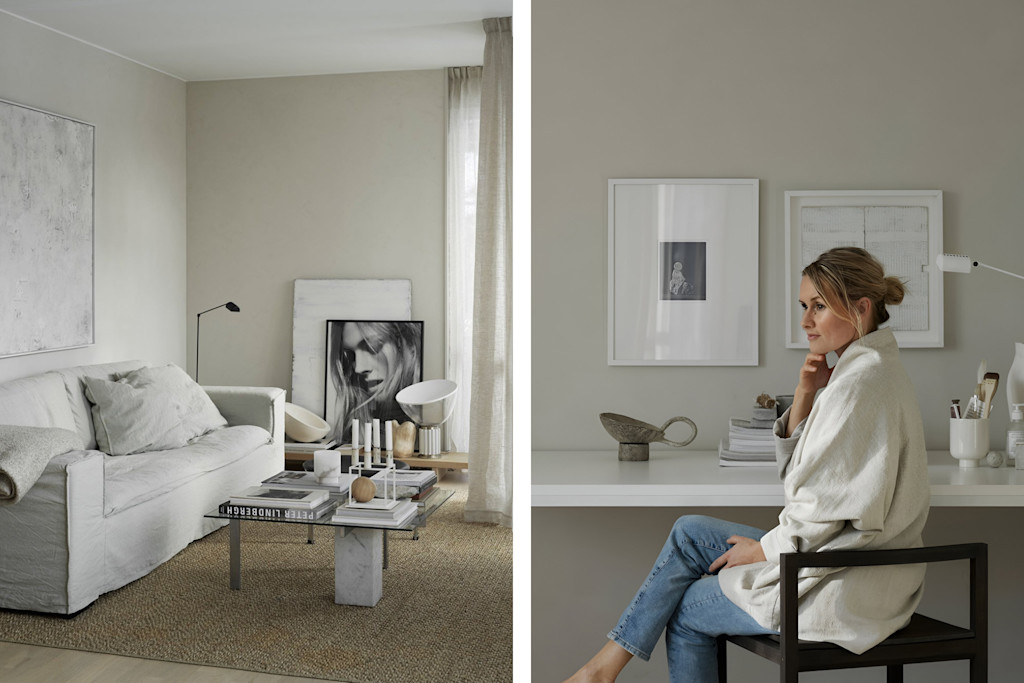
Who is Pella Hedeby?
I am a 46-year-old decorator and stylist. Living south of Stockholm with my two boys Leo 18, Viggo 15 and our two Italian greyhound girls. I was born and raised in the woods in northern Sweden and always feel at my best when I'm outside, close to nature. Yoga and a mindful lifestyle with more conscious everyday routines are other parts that I am curiously exploring and wish to develop further in my life.
What is your design philosophy when it comes to decorating a home?
When it comes to my interior design philosophy, I like to refer to interior design psychology. For me, our homes and the interiors we surround ourselves with play such a big role in how we feel. With my work, I always strive to create harmonious homes and environments. A place where you immediately feel at home and at ease. A symbiosis between function and aesthetics where the space becomes an arena for everyday life. It should feel unpretentious and at the same time give you inspiration and new energy. I like to keep it simple and create a soft minimalist theme with natural materials and textured layers. Where everyday objects are carefully selected to also form the decor and become simple still lifes.
What is your take on why Scandinavian design has captivated the world?
It's easy to live with, unadorned and timeless. I think it's simply about the simple expression and sense of authenticity. The function that is in focus together with natural materials and sustainable craftsmanship.
How do you think design affects our way of being - our sense of self, space and place?
Our homes and the decor we choose to surround ourselves with affect us mentally. A well-planned and tidy home, where everything has its place - gives us peace of mind. But it's not just about the practical planning, but equally about finding your style. A sense of style that you wish to live with over time. The choice of timeless and durable furniture and materials. An interior that grows with you and ages with dignity and patina. It reduces stress and creates a calm framework for life. The realization that you are not constantly looking for change, but feel at peace and content right where you are.
How would you differentiate between traditional minimalism and Scandinavian style?
If you refer to a traditional minimalism that is all white (or at least monochromatic) with architecturally sharp lines, and a bit cold in its expression, the Scandinavian style adds more warmth with natural elements such as wood and limestone. The Scandinavian style is also not as stripped down and minimalist in its expression. I find my main inspiration for minimalist interiors in the home and work of John Pawson, the master of creating a warm minimalist atmosphere.
Thinking of the new hybrid called Japandi - where do you see Scandinavian design in 20 years?
As the world looks today, inspiration and influences are much more fluid. We will always be closest to our roots - I am thinking of natural materials taken from Scandinavia and our outstanding design classics. But the style will quite naturally attract elements from other cultures and countries. The Japanese rice lamps from Akari today feel like a natural feature in a Scandinavian home. And I am personally very inspired by Belgian minimalism, with its warm textures and simple elegant expressions. But if you ask me, my style will look similar in 20 years, as it did 20 years ago – close to my roots.
Can you give us some insight into your personal behind-the-scenes life?
My own home is a quiet place, an apartment of 100 square meters with large floor-to-ceiling windows and 2 balconies where the doors are always open. The dogs and I spend most of our time outside when the weather permits. It was the bright light flow through the rooms that made me fall for this apartment. Light is something we need a lot of when we live in Scandinavia during the winter months. The home is decorated in a toned-down finish, where the walls are painted with chalk paint in shades of beige. Linen textures, hemp, a mix of wood, limestone and handmade ceramics are other recurring elements. And in terms of style, there are elements of Japanese design, rice lamps and smaller furniture and details by one of my favorite designer Sori Yanagi. I have also designed my own headboard, with a low bed on the floor inspired by low Japanese proportions that works so well with our Scandinavian design. When it comes to the minimalist expression, I strive to keep my home as stripped down as possible, as that's how I feel best. But with an open-plan home office, I always have a dose of creative clutter, mood boards and material samples displayed on my desk. My style and decor doesn't change much over time, but I find it hard to resist a vintage find every now and then.
Interview by Sofie Ganeva
Photos by Margarita Kradjian, Petra Bindel, Kristofer Johnsson and Pia Ulin